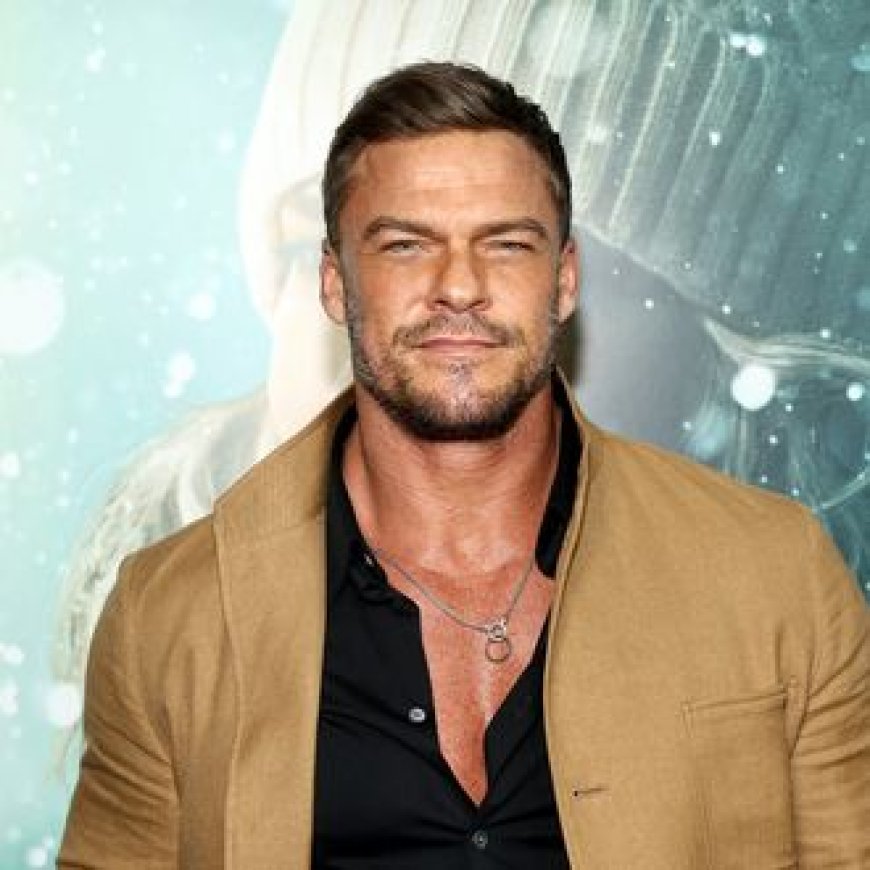Reacher’s Alan Ritchson Calls Out Sexual Abuse in the Modeling Industry
Alan Ritchson Calls Out Sexual Abuse in Modeling Industry Vulture

Lionsgate’s “Ordinary Angels” New York Premiere

Photo: Jamie McCarthy/WireImage
Alan Ritchson speaks out about sexual misconduct and assault in the modeling industry
- Alan Ritchson, a former Abercrombie model turned actor, has highlighted the prevalence of sexual misconduct and assault in the modeling industry.
- Ritchson describes the industry as “like legalized sex trafficking,” emphasizing the lack of regulation and the common knowledge that models are often subjected to abusive situations.
- He shares his personal experiences of being put in horrific environments where sexual abuse was the goal, with the promise of a paycheck to survive.
- Ritchson also reveals that even after quitting modeling, he faced groping photographers, including an incident with Mario Testino at the premiere of “Hunger Games: Catching Fire.”
Ritchson’s personal experience of assault on his last modeling job
- Ritchson discloses that he was sexually assaulted on his last modeling job by a famous photographer.
- He was promised a lucrative campaign for a magazine and a clothing line if he agreed to do nude photos, but instead, he became a victim of assault.
- Ritchson’s agent seemed aware of the photographer’s aggressive behavior, indicating a lack of concern for his safety.
Recognizing the unsafe working conditions for women in the industry
- Ritchson acknowledges the unsafe working conditions for women in the modeling industry.
- He expresses empathy for women who face power struggles and predatory individuals in the workplace.
- Ritchson highlights the additional challenges faced by women, as they often lack the physical ability to physically defend themselves in dangerous situations.
SDGs, Targets, and Indicators Analysis
1. Which SDGs are addressed or connected to the issues highlighted in the article?
- SDG 5: Gender Equality
- SDG 8: Decent Work and Economic Growth
- SDG 10: Reduced Inequalities
- SDG 16: Peace, Justice, and Strong Institutions
The article discusses issues related to sexual misconduct, assault, and unsafe working conditions in the modeling industry. These issues are connected to the SDGs mentioned above. SDG 5 focuses on achieving gender equality and empowering all women and girls. SDG 8 aims to promote inclusive and sustainable economic growth, full and productive employment, and decent work for all. SDG 10 aims to reduce inequalities within and among countries. SDG 16 focuses on promoting peaceful and inclusive societies for sustainable development, providing access to justice for all, and building effective, accountable, and inclusive institutions at all levels.
2. What specific targets under those SDGs can be identified based on the article’s content?
- Target 5.2: Eliminate all forms of violence against all women and girls in public and private spheres
- Target 8.7: Take immediate and effective measures to eradicate forced labor, end modern slavery and human trafficking
- Target 10.3: Ensure equal opportunity and reduce inequalities of outcome
- Target 16.2: End abuse, exploitation, trafficking, and all forms of violence against children
Based on the issues highlighted in the article, these specific targets under the relevant SDGs can be identified. Target 5.2 aims to eliminate all forms of violence against women and girls, including sexual assault and exploitation. Target 8.7 focuses on eradicating forced labor, modern slavery, and human trafficking, which are relevant to the issue of trafficking in the modeling industry. Target 10.3 aims to reduce inequalities of outcome, including gender-based inequalities in the workplace. Target 16.2 aims to end abuse, exploitation, trafficking, and violence against children, which includes addressing the unsafe working conditions faced by models.
3. Are there any indicators mentioned or implied in the article that can be used to measure progress towards the identified targets?
- Indicator 5.2.1: Proportion of ever-partnered women and girls subjected to physical, sexual, or psychological violence by a current or former intimate partner
- Indicator 8.7.1: Number of victims of forced labor, human trafficking, and modern slavery
- Indicator 10.3.1: Proportion of population reporting having personally felt discriminated against or harassed in the previous 12 months on the basis of a ground of discrimination prohibited under international human rights law
- Indicator 16.2.2: Number of victims of human trafficking per 100,000 population, by sex, age group, and form of exploitation
The article does not explicitly mention specific indicators, but these indicators can be used to measure progress towards the identified targets. Indicator 5.2.1 measures the proportion of women and girls subjected to violence by an intimate partner, which is relevant to target 5.2. Indicator 8.7.1 measures the number of victims of forced labor, human trafficking, and modern slavery, which is relevant to target 8.7. Indicator 10.3.1 measures the proportion of the population reporting discrimination or harassment based on prohibited grounds, which is relevant to target 10.3. Indicator 16.2.2 measures the number of victims of human trafficking, which is relevant to target 16.2.
4. Table: SDGs, Targets, and Indicators
| SDGs | Targets | Indicators |
|---|---|---|
| SDG 5: Gender Equality | Target 5.2: Eliminate all forms of violence against all women and girls in public and private spheres | Indicator 5.2.1: Proportion of ever-partnered women and girls subjected to physical, sexual, or psychological violence by a current or former intimate partner |
| SDG 8: Decent Work and Economic Growth | Target 8.7: Take immediate and effective measures to eradicate forced labor, end modern slavery and human trafficking | Indicator 8.7.1: Number of victims of forced labor, human trafficking, and modern slavery |
| SDG 10: Reduced Inequalities | Target 10.3: Ensure equal opportunity and reduce inequalities of outcome | Indicator 10.3.1: Proportion of population reporting having personally felt discriminated against or harassed in the previous 12 months on the basis of a ground of discrimination prohibited under international human rights law |
| SDG 16: Peace, Justice, and Strong Institutions | Target 16.2: End abuse, exploitation, trafficking, and all forms of violence against children | Indicator 16.2.2: Number of victims of human trafficking per 100,000 population, by sex, age group, and form of exploitation |
Behold! This splendid article springs forth from the wellspring of knowledge, shaped by a wondrous proprietary AI technology that delved into a vast ocean of data, illuminating the path towards the Sustainable Development Goals. Remember that all rights are reserved by SDG Investors LLC, empowering us to champion progress together.
Source: vulture.com

Join us, as fellow seekers of change, on a transformative journey at https://sdgtalks.ai/welcome, where you can become a member and actively contribute to shaping a brighter future.







